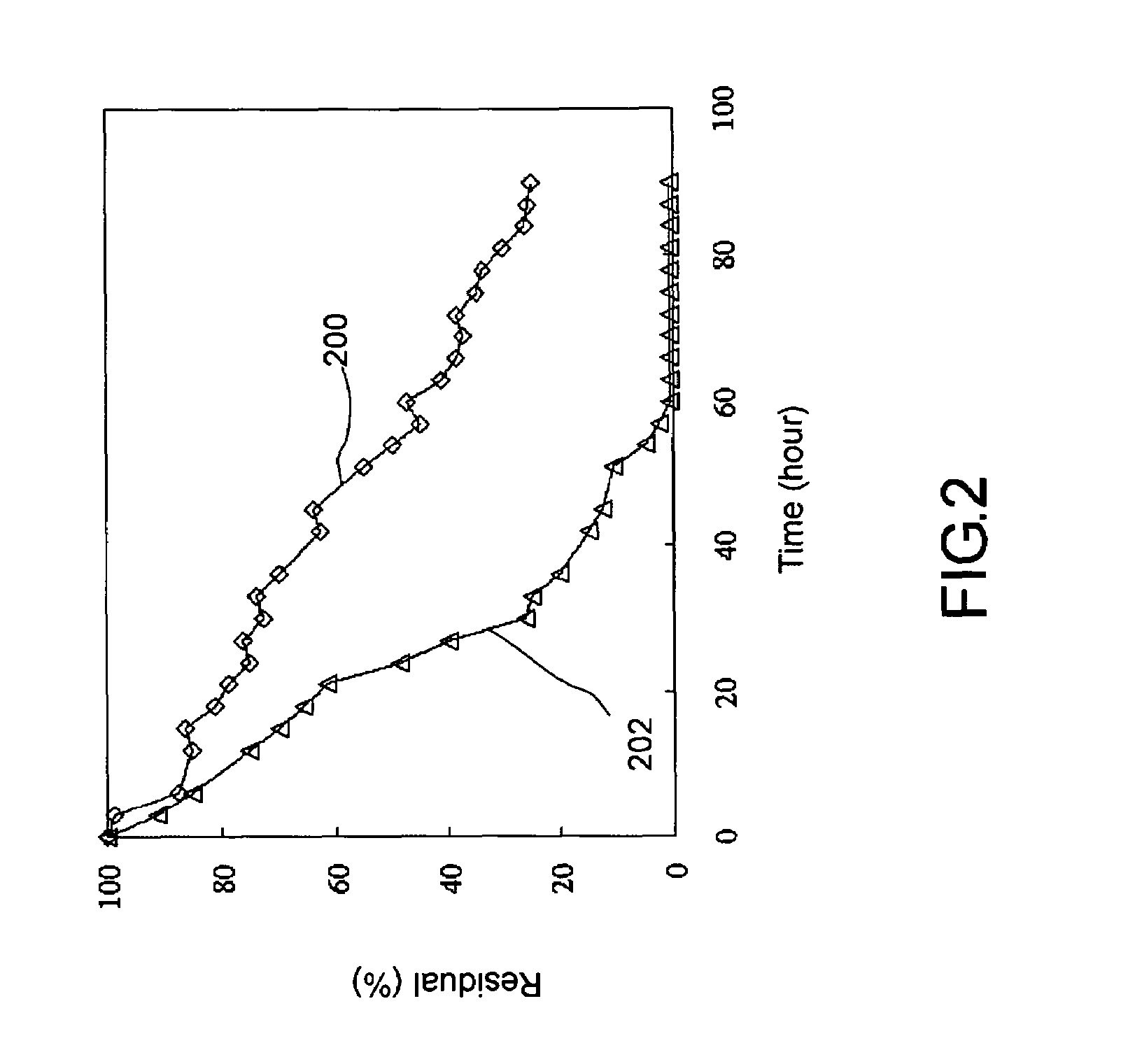Biological method for removing organic polymers
a biological method and organic polymer technology, applied in the field of biological methods, can solve the problems of contaminating soils and water, toxicity of nonionic surfactants in ecology and human health, and achieve the effect of higher removal rate of organic polymers in water
- Summary
- Abstract
- Description
- Claims
- Application Information
AI Technical Summary
Benefits of technology
Problems solved by technology
Method used
Image
Examples
Embodiment Construction
[0018]The present invention provides a biological method for effectively removing organic polymers that are commonly used in domestic, industrial or agricultural activities to resolve environmental pollution related to the contamination of soil and water by organic polymers. The organic polymers, for example, alkylphenol polyethoxylates type of nonionic surfactant, are commonly used in the agricultural activities and chemical industries. The method of the invention is not only applicable in removing alkylphenol polyethoxylates type of nonionic surfactant. It is also applicable in removing other types of organic polymer compound that may cause environmental contamination. The applications of the method of this invention to soil and water are respectively discussed hereinafter. This invention may, however, be embodied in many different forms and should not be construed as limited to the embodiments set forth herein.
[0019]A bacterial strain (Pseudomonas nitroreducens TX1) is first cult...
PUM
| Property | Measurement | Unit |
|---|---|---|
| water content | aaaaa | aaaaa |
| temperature | aaaaa | aaaaa |
| temperature | aaaaa | aaaaa |
Abstract
Description
Claims
Application Information
 Login to View More
Login to View More - R&D
- Intellectual Property
- Life Sciences
- Materials
- Tech Scout
- Unparalleled Data Quality
- Higher Quality Content
- 60% Fewer Hallucinations
Browse by: Latest US Patents, China's latest patents, Technical Efficacy Thesaurus, Application Domain, Technology Topic, Popular Technical Reports.
© 2025 PatSnap. All rights reserved.Legal|Privacy policy|Modern Slavery Act Transparency Statement|Sitemap|About US| Contact US: help@patsnap.com



